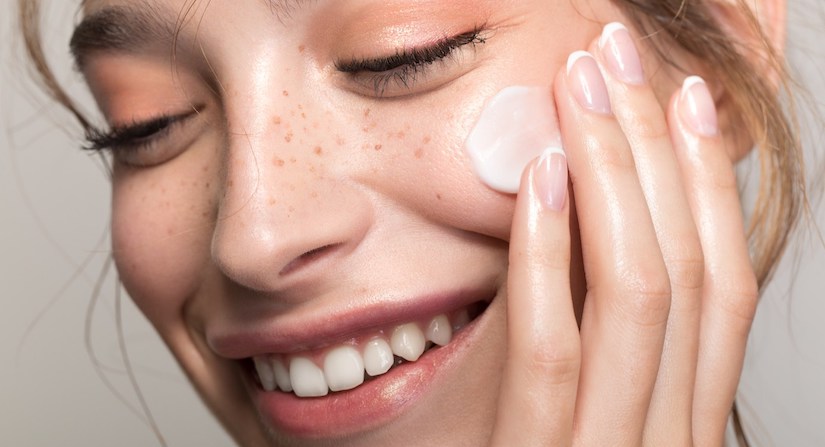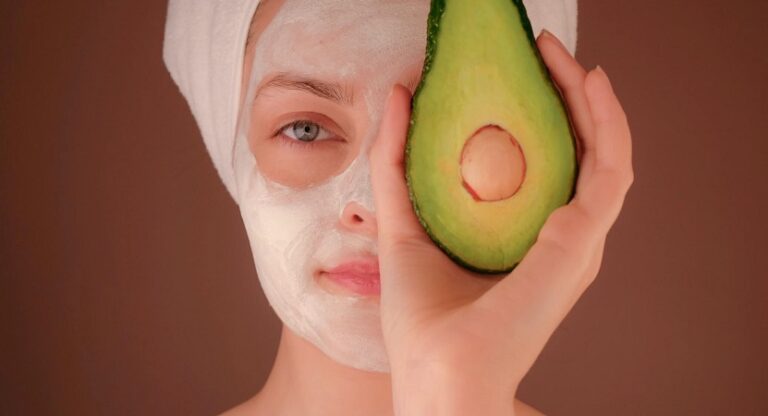More and more people are becoming conscious of what they eat and drink. This is mostly due to the sharp increase in the prevalence of lifestyle diseases such as cancer. Many may, however, not be aware that what they put on their bodies is also vital to their overall well-being. Various studies have shown that a lot of ingredients used in skincare products have detrimental effects on the human body. Now, more than ever, it has become crucial for you to check each product label in order to steer clear from harmful ingredients.
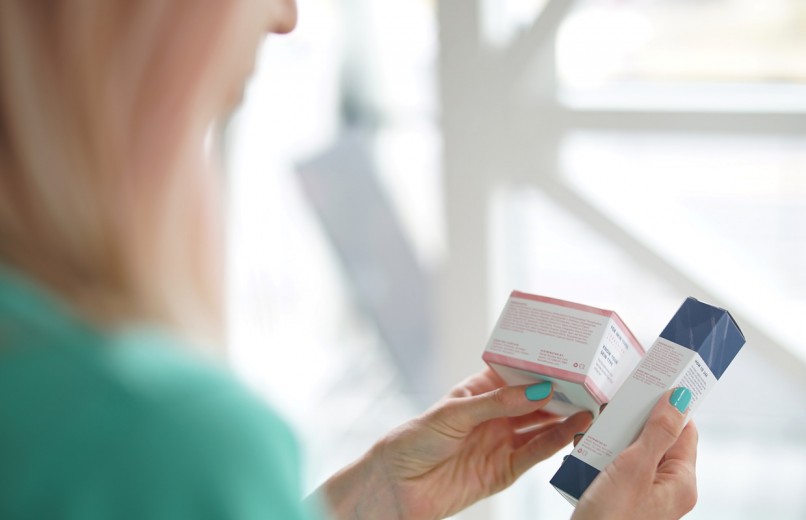
Unfortunately, the FDA has not placed strict regulations on beauty and skincare products, which has enabled manufacturers to use many unsafe chemicals. The FDA’s regulation of the industry is mostly focused on advertising, and not necessarily on what’s included in product formulations. As a result, the administration has only banned 11 chemicals used in cosmetics, compared to a whopping 1,300 plus that the European Union has banned. That alone is a testament to the fact that American consumers are exposed to a lot of toxic chemicals in cosmetics.
With the rising awareness of the toxicity of some of the ingredients in skincare products, there has been an increase in the production of safer skincare products. That is what is referred to as “clean beauty”–in essence, products that don’t contain harmful ingredients. You can clean up your routine by slowing replacing all your chemical skincare products with natural ones. Still, since the industry is not regulated, there are some unscrupulous manufacturers who falsely label products containing synthetic chemicals as 100 percent natural. If you cannot find a brand that you trust, you can even try making your own skincare products at home using readily available natural ingredients.
So far, switching to clean beauty seems to be the easiest way to avoid hundreds of damaging chemicals that are present in almost all kinds of conventional beauty products. To better navigate this topic and identify exactly what products you should be replacing, we’ll look at:
- 14 Harmful Ingredients to Watch Out for in Skin Care Products
- Skin Care Ingredients to Avoid if You Have Sensitive Skin
- Skin Care Ingredients to Avoid During Pregnancy
While thousands of chemicals have negative effects on our bodies, there are those that appear in most of the commonly used products. Here are 14 harmful skincare ingredients to look for on labels and avoid.
14 Toxic Ingredients to Watch Out for in Skin Care Products
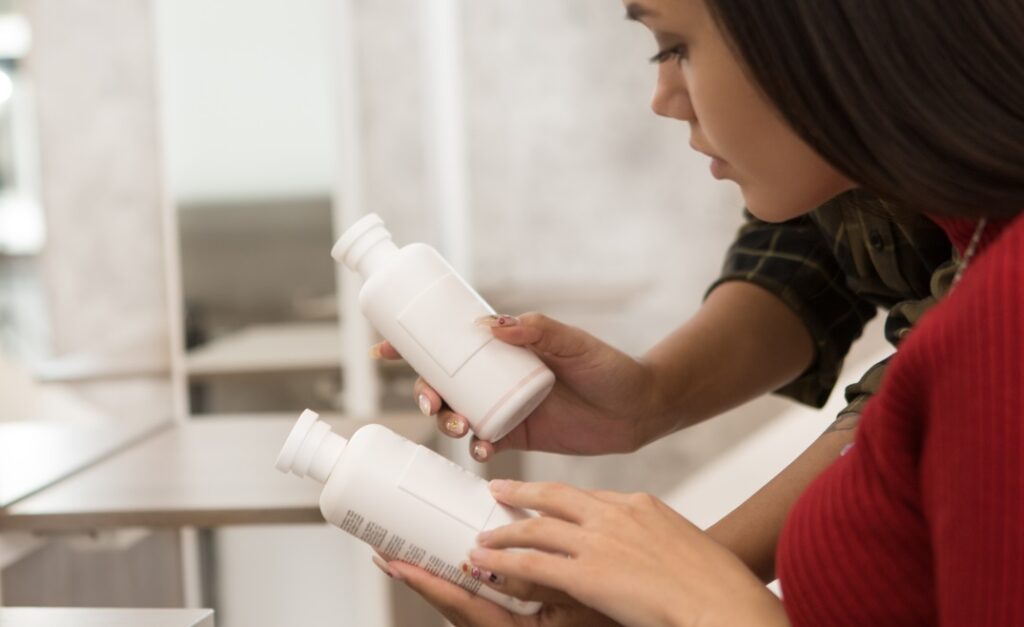
1. DEA, MEA, TEA
These are diethanolamine (DEA), monoethanolamine (MEA), and triethanolamine (TEA). The three are ethanolamine compounds, commonly used in products to make them foamy or creamy. They’re also used as pH adjusters, where they alter the acidity of other ingredients in product formulations. These compounds irritate the skin and eyes. DEA has been found to interfere with the normal functioning of the body’s hormonal system. This affects the reproductive system whereby the sperm structure in males is affected, resulting in infertility issues.
Also, the reaction between DEA and nitrite ingredients found in cosmetics results in the formation of nitrosamines. Nitrosamines are compounds that have been shown to have carcinogenic effects.
Ethanolamine compounds are commonly found in sunscreens, fragrances, soaps, and facial cleansers.
2. Parabens
Compounds found in parabens include isobutyl parabens, ethylparaben, butyl parabens, and methyl parabens. These are common preservatives in cosmetic products. When applied topically, these compounds penetrate the skin and end up in the body, where they disrupt the estrogen function. They bind to estrogen receptors, which creates the perception of an influx of the hormone. That leads to an abnormal multiplication of breast cells and results in an increased risk of breast cancer.

Parabens can cause skin irritation. They can also encourage the development of contact dermatitis, which is characterized by burning skin, blisters, and rashes.
Parabens can be found in lotions, moisturizers, deodorants, face cleansers, body wash, and many other skincare products.
3. Aluminum
Aluminum salts that can be found in cosmetics include Aluminium Hydroxide, Aluminium Stearate, and Aluminium Oxide. These compounds are pro-oxidant and, therefore, encourage oxidative damage on the skin. When applied to the skin, they cause an increase in reactive oxygen species or free radicals. That leads to an imbalance between antioxidants and the oxidants, thereby causing oxidative damage. Oxidative stress on the skin leads to the damage of the skin cells’ DNA, which causes premature aging. Ultimately, that may result in skin cancer.
Aluminum compounds are commonly found in antiperspirants and deodorants.
4. Triclosan
In cosmetic formulations, Triclosan is used as an anti-bacterial agent that prolongs the shelf life of products. Triclosan is a skin and eye irritant. When absorbed through the skin, it affects the functioning of the endocrine system. That leads to toxicity in the reproductive, respiratory, and immune systems. It might also cause bacterial resistance to your body’s immune defense mechanisms.
Triclosan can be found in soaps, shaving creams, and deodorants. It’s one of the very few ingredients that the FDA considers harmful, and which it has strictly regulated.
5. Oxybenzone
Oxybenzone is a common ingredient in sunscreens, where it’s used as a UV filter. It can penetrate the skin and into the bloodstream, where it disrupts the body’s hormonal functioning by mimicking estrogen. As a result, it causes reduced sperm production in males and increases the risk of endometriosis in women. It may also cause skin allergies in some users.
You can find oxybenzone in chemical sunscreens and other skincare products that have sunscreen.
6. Phthalates
This is a group of compounds that softens plastics used in cosmetic formulations. Studies on Dibutyl Phthalate (DBP) have shown that the compound is toxic to the reproductive system. Long term use may cause fertility issues. Liver and kidney failure have also been observed in children after prolonged exposure to phthalates. Overall, phthalates have been shown to be endocrine system disruptors that affect reproduction and development.
Phthalates can be found in lotions and deodorants. However, they may not be listed on a product label as they could fall under the catch-all category commonly known as “fragrance” (see #14).
7. DMDM Hydantoin
DMDM Hydantoin is yet another anti-microbial agent used as a preservative in skincare products. Contact with the skin may result in itching, blistering, eczema, irritation, and reddening. When inhaled, this compound irritates the respiratory system, and may even encourage the development of asthma. Over time, the DMDM Hydantoin in product formulations releases formaldehyde. Formaldehyde is a known human carcinogenic, which means that it causes cancer. Short term effects of exposure to formaldehyde include skin allergies, joint pain, and headaches.
Products that contain DMDM Hydantoin include body lotions, creams, and other skincare products.
8. Siloxanes
Siloxanes are compounds used to moisten, soften, and smoothen cosmetic formulations. They can be identified by their suffixes of -methicone, or -siloxane. Cyclotetrasiloxane (D4) and Cyclopentasiloxane (D5) are some of the siloxanes that have been proven to have adverse effects on human health. D4 interferes with the production of hormones in the body. That disrupts basic body functions such as reproduction, metabolism, growth and development, and sleep. D5 leads to the formation of uterine tumors.
You can find siloxanes in moisturizers, lotions, and other leave-in skincare products.
9. Retinol
Retinol is a common ingredient in anti-aging skincare products. It works by stimulating collagen production, which fights off aging signs such as wrinkles. However, it becomes harmful to the skin when exposed to the sun. In sunlight, it becomes carcinogenic, promoting oxidative damage to the skin. Long term use with exposure to sunlight, therefore, leads to the growth of skin tumors. The topical application of retinol can also result in skin swelling, blistering, redness, dryness, and irritation.
Retinol can be found in moisturizers, lotions, face creams, and a host of other anti-aging products.
10. Formaldehyde
Besides being released by DMDM Hydantoin or other chemical ingredients, formaldehyde is also directly used in skincare products. It’s carcinogenic and disrupts hormonal function when absorbed into the body. Once absorbed, it can lead to the poor functioning of the reproductive system and inhibited growth and development.
Formaldehyde can be found in bubble bath and body wash.
11. Hydroquinone
Hydroquinone is a skin-lightening agent used to bleach the skin. It can be carcinogenic and harmful if it’s used together with mercury present in some skincare products. Side effects of hydroquinone on the skin include blisters, dryness, stinging, and the formation of blue-black lesions known as ochronosis.
Hydroquinone can be found in creams, lotions, serums, and gels made for skin lightening.
12. Polyethylene Glycol (PEG)
This is a petroleum-based compound that’s used as a solvent in product formulations. It has been shown to cause irritation when used on broken or damaged skin. Also, depending on its manufacturing process, it may contain toxic contaminants. PEGs might be contaminated with ethylene oxide and 1,4-dioxane. Ethylene oxide has carcinogenic potency and can cause the deterioration of the nervous system. 1,4-dioxane has also been identified as a possible carcinogenic.
Body lotions and creams are products where you may find polyethylene glycol.
13. Sodium Laureth Sulfate (SLS)
Sodium laureth sulfate is used in various products to produce bubbles or make products lather. When the process of vacuum stripping is not included during the manufacturing process, SLS is left with contaminants. SLS may be contaminated with ethylene oxide and 1,4-dioxane, the same ones present in polyethylene glycol. Sodium laureth sulfate may irritate the eyes and skin and is, therefore, one of the ingredients to avoid in face moisturizers.
SLS is found in soaps, body wash, bubble baths, lotions, and a majority of all the skincare products that foam.
14. Synthetic Fragrances
Also known as perfume, synthetic fragrances refer to a combination of numerous ingredients that are usually never listed on product labels. Many of these unnamed components are harmful chemicals, such as formaldehyde and several phthalates. With such compounds, long-term use of synthetic perfumes may lead to the development of cancer and cause infertility.
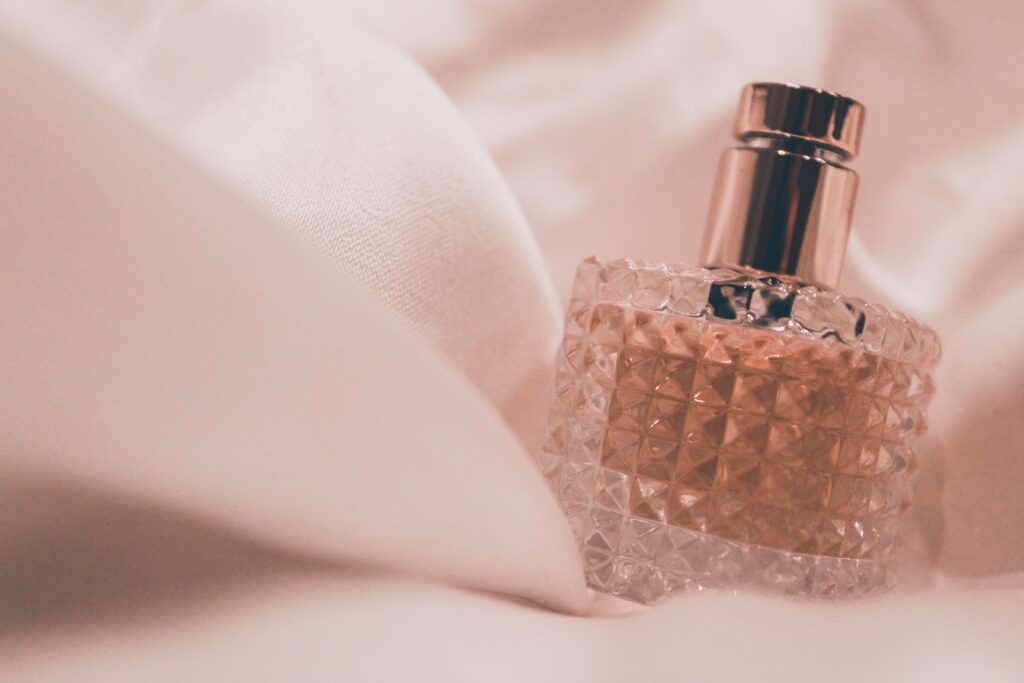
Synthetic fragrances can cause skin allergies in some people. They can also trigger migraines and irritate the respiratory tract when inhaled. It’s advisable to avoid any products that have fragrance, as there could be many toxic chemicals hiding behind the term.
Fragrance is found in scented products, including lotions, facial creams, exfoliating scrubs, deodorants, sprays, body wash, sunscreen, and soaps.
Skin Care Ingredients to Avoid if You Have Sensitive Skin
Synthetic chemicals easily trigger sensitive skin. On that note, some of the most harmful skin care ingredients to avoid for sensitive skin include:
- Fragrance – As we’ve already mentioned, fragrances are made from a combination of many different chemical compounds. That exposes the skin to a lot of foreign substances, most of which irritate sensitive skin.
- Sulfates – This refers to ingredients such as sodium lauryl sulfate and sodium laureth sulfate. These ingredients strip away the skin’s natural oils leaving behind dry and sometimes reddened skin.
- Oxybenzone – Chemicals such as oxybenzone, which are found in chemical sunscreens, irritate sensitive skin. It’s best to stick to natural sunblock if your skin is highly sensitive.
Skin Care Ingredients to Avoid During Pregnancy
Some compounds in cosmetic products will not only penetrate the mother’s body but also the developing fetus. Chemicals in skincare ingredients which can cause harm to the fetus and should be avoided include:
- Parabens – Parabens can cross the placental barrier. When a fetus is exposed to these compounds, it can suffer impaired growth. The chemicals can also interfere with the development of the reproductive and immune systems of a fetus.
- Phthalates – Exposure to phthalates may inhibit reproductive development in male babies.
- Diethanolamine (DEA) – DEA affects the brain development of a fetus when the mother is exposed to it during pregnancy. It eventually affects memory function and learning ability in children after birth.

These are also skincare ingredients to avoid while breastfeeding, as they mimic estrogen and usually end up in breast tissue.
The Takeaway
Natural skincare products are gradually taking up more space in stores. This has made it easier to avoid dangerous ingredients. All you have to do is take a few minutes to check the label and understand which ingredients to avoid. If you’re having a hard time deciphering ingredient names, you can use a skincare ingredients checker tool to be certain. Begin by eliminating the 14 ingredients highlighted here, and you’ll be well on your way towards using safe skin care products.
Did You Enjoy This Article?
If you enjoyed this article, you might also like our articles discussing the top skincare products such as Top 17 Vitamin C Serum, Top 15 Natural Face Moisturizer, and 13 Best Natural Body Moisturizer.

